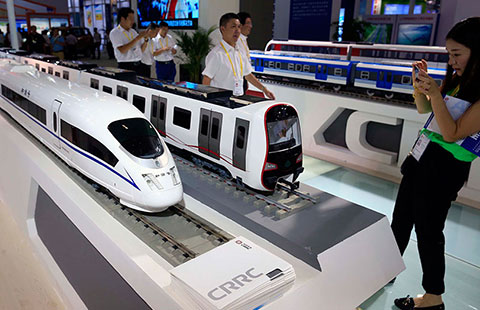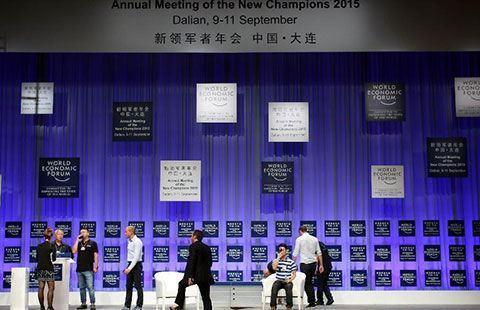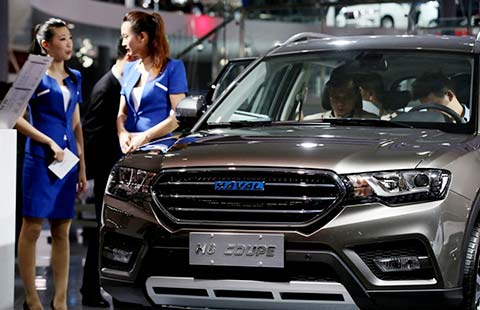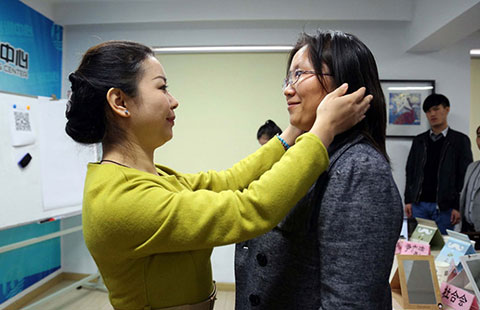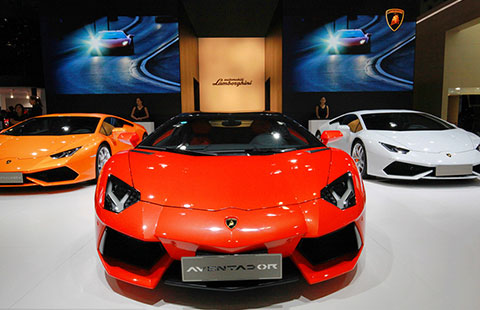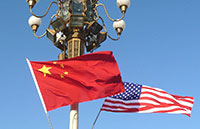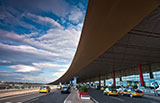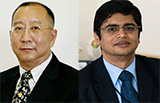Chinese tea aims to go global on Belt and Road Initiative
By He Yini (chinadaily.com.cn) Updated: 2015-07-31 09:42
 |
|
Performers present tea art during an event that celebrates the 10th anniversary of Hong Kong-listed subsidiary LongRun Tea Group, July 16, 2015. [Photo / chinadaily.com.cn] |
Jiao's company established a college and research institute with Yunnan Agricultural University, becoming the first center of learning worldwide to train professionals in Pu'er tea culture.
"Tea culture is a major part of Chinese culture that could go ahead of the rest when we are boosting the Belt and Road Initiative," Jiao told China Daily.
When Chinese tea culture is spreading around the world, the whole industry will take off, he said.
The country was the origin of tea production and the earliest to embark on global trade more than 1,400 years ago, dominating the world market for a period of time since the mid-19th century.
Running long on world stage
Statistics from the International Tea Committee show China produced 1.98 million tons last year, accounting for nearly 40 percent of the world's total. India was second with 1.19 million tons during the same period.
Although China is the largest tea producer, its export remains meager.
In 2014, exports stood at 301,000 tons, down 7.5 percent from a year earlier. Export value grew 2.1 percent year-on-year to reach $1.27 billion during the same period.
There is huge potential for Chinese tea to go global, said Jiao. "But it's a long road ahead".
"Localization should be the first step of a company's global strategy," said Jiao. "What we are trying to win are not Chinese people in a foreign country, but rather those natives willing to accept Chinese culture.
"That's the way for a company to survive and grow in international markets".
Looking ahead, Jiao's company has come up with LongRun Selanmu, a Halal tea tailored for Muslims, the first trial in the world.
"There are 1.5 billion Muslims in the world. More importantly, many countries along 'One Belt, One Road' are Muslim," said Jiao. "That's a big market for Selanmu tea".
Selanmu, together with the company's Chulan Tea, will be on display at the Chinese Pavilion during the Milan Expo highlighting tradition, modernity and China's economic prowess.
Tea production of countries and regions along "One Belt, One Road" took up more than 80 percent of the global volume last year.
The Belt and Road Initiative refers to the Silk Road Economic Belt and the 21st Century Maritime Silk Road proposed in 2013 with the goal of reviving ancient trade routes between Asia and Europe.
The China-proposed trade and infrastructure network passes through more than 60 countries and regions, with a population of 4.4 billion.
- 2015 China International Fair for Investment and Trade kicks off in Xiamen
- China's commodity imports robust in Jan-Aug period
- China stocks rebound 2.92%
- 2015 China box office already past 2014 total
- China foreign trade decline widens in August
- Interview: JP Morgan's senior executive bullish on China
- Innovation, development the focus for NZ mayors
- Lives of freelancers
